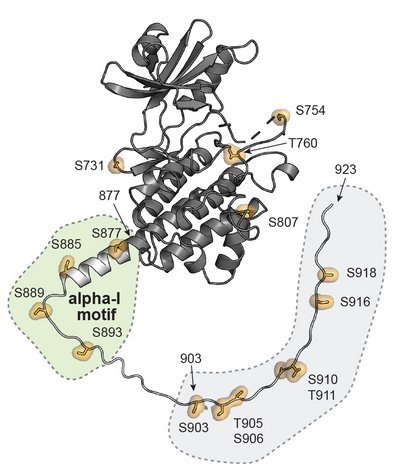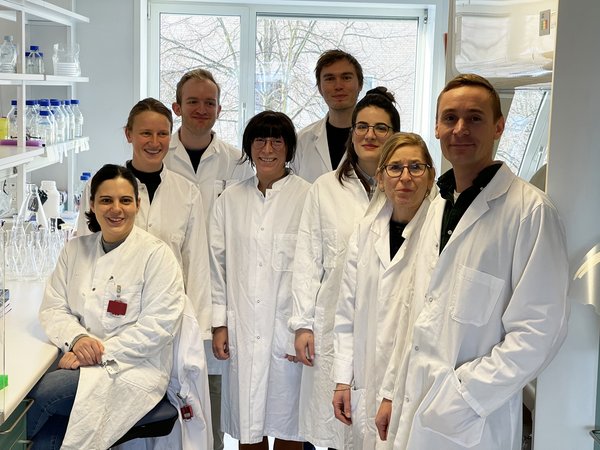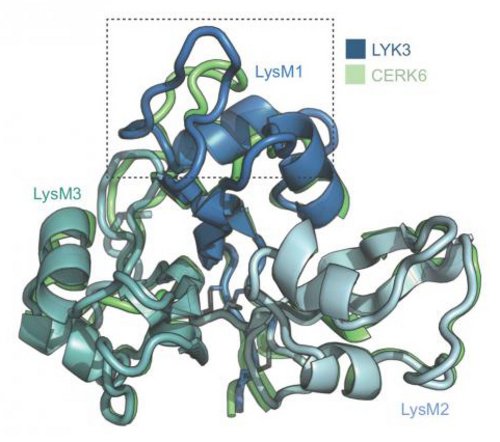Researchers at Aarhus University have unveiled a groundbreaking discovery shedding light on the intricate play between legume plants and nitrogen-fixing bacteria. Their study, published in PNAS, details the crucial role played by phosphorylation in driving the formation of symbiotic organs, known as nodules, on plant roots. The long-term goal is to enable symbiosis in root nodules in important crops such as barley, maize and rice to avoid the use of chemical fertilizers.

Researchers from Aarhus University have now discovered the receptor complex crucial for initiating symbiotic signaling in legume plants that engage in symbiosis with nitrogen-fixing bacteria. In the study published in Science, the researchers describe a novel technique using nanobodies to investigate and activate receptor complexes. Surprisingly, the technique also identified barley receptors with a similar function. This opens a new perspective for more sustainable agri-food systems by engineering root nodule symbiosis into important crops using their own genes.

An international team led by researchers from Aarhus University have discovered how plant receptors recognize specific carbohydrate signaling molecules from their bacterial symbionts. This ability enables the plant to select and accommodate nitrogen-fixing bacteria inside their roots.
![[Translate to English:] gruppefoto](/fileadmin/site_files/mb/nyheder/2021/Forskere_opdager_hvordan_plantereceptorer_verificerer_de_korrekte_symbiotiske_bakterier-674x270_px.jpg)
Legume plants know their friends from their enemies, and now we know how they do it at the molecular level. Plants recognize beneficial microbes and keep harmful ones out, which is important for healthy plants production and global food security. Scientists have now discovered how legumes use small, well-defined motifs in receptor proteins to read molecular signals produced by both pathogenic and symbiotic microbes. These remarkable findings have enabled the researchers to reprogram immune receptors into symbiotic receptors, which is the first milestone for engineering symbiotic nitrogen-fixing symbiosis into cereal crops.
An international team of researchers led by Aarhus University are the first to determine the crystal structure of an exopolysaccharide receptor. The results give insight into how plants and microbes communicate, and this knowledge can hopefully be used for more sustainable agriculture where microbes play an important role..
An international research team now explains how one of the largest molecular machineries - the nuclear pore complex – is being assembled using natively unfolded FG-repeats as molecular Velcro.
Aarhus University scientists have developed miniature antibodies (nanobodies) that can be labelled on certain amino acids. This provides a direct route for solving new X-ray crystal structures of protein complexes important for gaining mechanistic understanding of cellular processes, which is important in the development of drugs.
New Danish research provides mechanistic insight into how DNA is monitored and repaired if damage occurs. The results may eventually help to improve the treatment of certain types of cancer, as the DNA repair complex provides a mechanism for cancer cells to resist chemotherapy.
Structural knowledge of the DNA repair complex New Danish research provides mechanistic insight into how DNA is monitored and repaired if damage occurs. The results may eventually help to improve the treatment of certain types of cancer, as the DNA repair complex provides a mechanism for cancer cells to resist chemotherapy.
A comprehensive knowledge of the synthesis of organisms and the utilisation of the compound PRPP may be useful in efforts to develop methods for combating microorganisms that can infect humans and other mammals. An international research team has now made a complete list of results in the field.
Survey of knowledge on how to combat microorganisms A comprehensive knowledge of the synthesis of organisms and the utilisation of the compound PRPP may be useful in efforts to develop methods for combating microorganisms that can infect humans and other mammals. An international research team has now made a complete list of results in the field.
Kasper Røjkjær Andersen has been appointed Professor in Plant Structural Biology at the Department of Molecular Biology and Genetics at Aarhus University as of 1 May 2024. His research focuses on understanding how plants form symbiosis with bacteria and fungi, and how to harness this ability to support the Green Transition.
![[Translate to English:] Kasper](/fileadmin/_processed_/4/6/csm_kasper_roejkjaer_andersen_6750117ca9.jpg)
Researchers from the Department of Molecular Biology and Genetics at Aarhus University take part in an international research network, ENSA, which focuses on improving nutrient uptake by plants to reduce the need for fertilizer. The network has just received a total grant of USD 35 million from Bill & Melinda Gates Agricultural Innovations program, of which Aarhus University receives USD 4 million.

Associate Professor Kasper Røjkjær Andersen has been granted a Carlsberg Foundation Young Researcher Fellowship for three years to study the structure and function of receptors and calcium decoders at the Department of Molecularbiology and Genetics, Aarhus University.

Results published in Science from Aarhus University describe how legumes pick up special signalling molecules to distinguish between harmful and beneficial microbes. These results have been nominated by the Danish technical news journal “Ingeniøren” (the Engineer) as being among the five most important results in Denmark in 2020.
